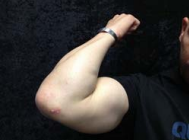South Florida doctor only one in region performing minimally invasive procedure curing Cubital Tunnel Syndrome
Dr. Alejandro Badia is the only South Florida physician offering a minimally invasive procedure to effectively cure Cubital Tunnel Syndrome, alleviating pain and discomfort in the elbow and hand.









